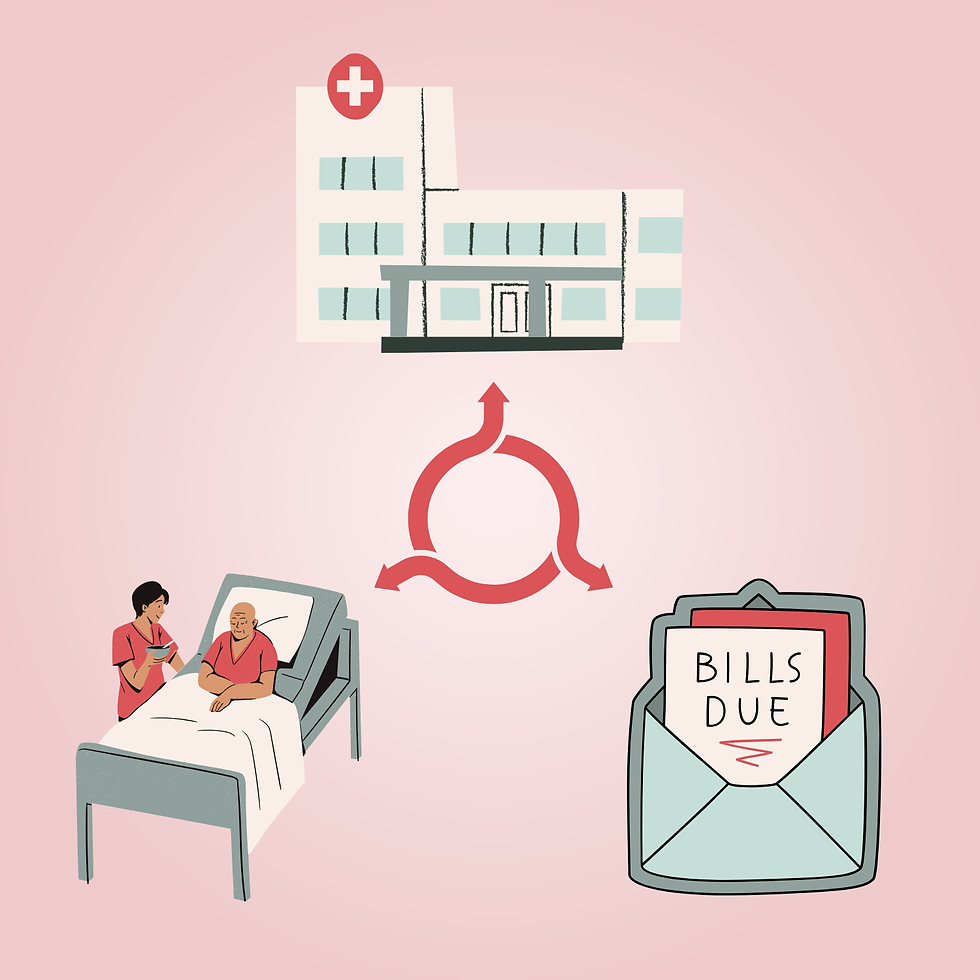Closing the LGBTQ+ Gap in Health Care
- Madi McMichael
- Mar 7, 2021
- 4 min read
Updated: Mar 12, 2021
Access to health care has been a notoriously controversial topic in political and legal systems, and many inequities within health care are pervasive. In this instance, we are going to explore the relationship between healthcare and the LGBTQ+ community. There has been an extensive history of anti-LGBT discrimination within healthcare that continues to shape access to healthcare for members of this community as well as exacerbating disparities in health conditions. In fact, homosexuality was categorized as a disorder in the Diagnostic and Statistical Manual of Mental Disorders (DSM) until 1973 and transgender identity was recently changed to “gender dysphoria” in the latest edition from 2013. Even more recently, the Trump-Pence administration sought to make it easier for health care providers to discriminate against members of the LGBTQ+ community using religious exemptions, despite the Obama administration and several court rulings explicitly protecting against discrimination in health care based on gender identity and sex stereotypes [1]. Furthermore, for patients who are turned away by providers, it is difficult to find alternatives, especially given a shortage of medical providers in rural communities as well as in critical fields such as mental health care [1]. Members of the LGBTQ+ community may face legal discrimination in access to health insurance, housing, employment, marriage, and adoption, and there are a lack of laws protecting against bullying in school and fostering social programs for this community [3]. As a result, many LGBTQ+ individuals are unable to find medical services or forego care, and are more likely to face numerous health disparities, such as increased risk of depression and chronic conditions, as a result of discrimination [2].

One of the most dangerous results of discrimination against the LGTBQ+ community in health care is the delay or denial of necessary medical care, which may result in members of this community avoiding medical care as a whole. There have been instances of physicians refusing to provide HIV medications, misgendering transgender patients, or even turning away pediatric patients with same-sex parents, which are just some examples of the discrimination that this community faces [1]. Data from a 2017 survey found that 8% of LGBTQ+ respondents had a healthcare provider refuse to see them because of their sexual orientation and 7% had a provider who refused to recognize their family, including a child or a same-sex partner [1]. On the same survey, it was found that 29% of transgender respondents had a healthcare provider refuse to see them and 23% were intentionally misgendered or dead-named [1]. This type of discrimination deters individuals from this community. As a result, 1 in 4 transgender people and 8% of LGBQ patients avoided seeking essential health care due to fear of discrimination [1].
Furthermore, there are marked disparities in health within the LGBTQ+ community, such as high rates of psychiatric disorders, substance abuse, and suicide, with LGBTQ+ youth being 2 to 3 times more likely to attempt suicide [3][4]. LGBTQ+ youth are also more likely to be homeless, less likely to get preventative screenings for cancer, and are at higher risk of HIV and other STDs [3]. One of the major health concerns in the LGBTQ+ community is sexually transmitted infections. In particular, almost half of the incidences of all sexually transmitted infections in the United States affect MSM (men who have sex with men), despite the fact that MSM constitute 2% of the U.S. population [3]. It is also important to note the even larger disparities among black and other non-white members of the LGBTQ+ community who are at a larger risk for HIV/STDs and other health conditions. Ultimately, it is essential for healthcare providers to understand these disparities and become knowledgeable in the history of discrimination against the LGBTQ+ community that has led to such concerning disparities, so that these individuals can access the health care that they deserve.
Protections for the LGBTQ+ community are uneven despite the federal protections from the Obama administration, with 37 states in just July of 2018 not having an explicit ban against health insurance discrimination on the basis of sexual orientation or gender identity [2]. Much effort is still needed to ensure these protections and to eliminate medical disparities, including providing medical students with proper training to increase culturally competent care, implementing anti-bullying policies in schools, providing accessible social services to reduce suicide and homelessness among youth, and treating HIV and STIs with effective interventions [3]. Until all these needs are met, it is important to shed light on these disparities and talk about critical issues among the LGBTQ+ community so that one day every patient can get the help they need, no matter who they are or who they love.
References
Accessing Health Care.” Center for American Progress, 5 Mar. 2021, www.americanprogress.org/issues/lgbtq-rights/news/2018/01/18/445130/discrimination-prevents-lgbtq-people-accessing-health-care/.
[2]“US: LGBT People Face Healthcare Barriers.” Human Rights Watch, 28 Oct. 2020,
www.hrw.org/news/2018/07/23/us-lgbt-people-face-healthcare-barriers.
Health | Healthy People 2020,
www.healthypeople.gov/2020/topics-objectives/topic/lesbian-gay-bisexual-and-transgender-health.
GAY, BISEXUAL AND TRANSGENDER PEOPLE: Understanding and Eliminating Health Disparities.” Improving the Health of LGBT People, The Fenway Institute, www.lgbtqiahealtheducation.org/wp-content/uploads/Improving-the-Health-of-LGBT-People.pdf.



Comments